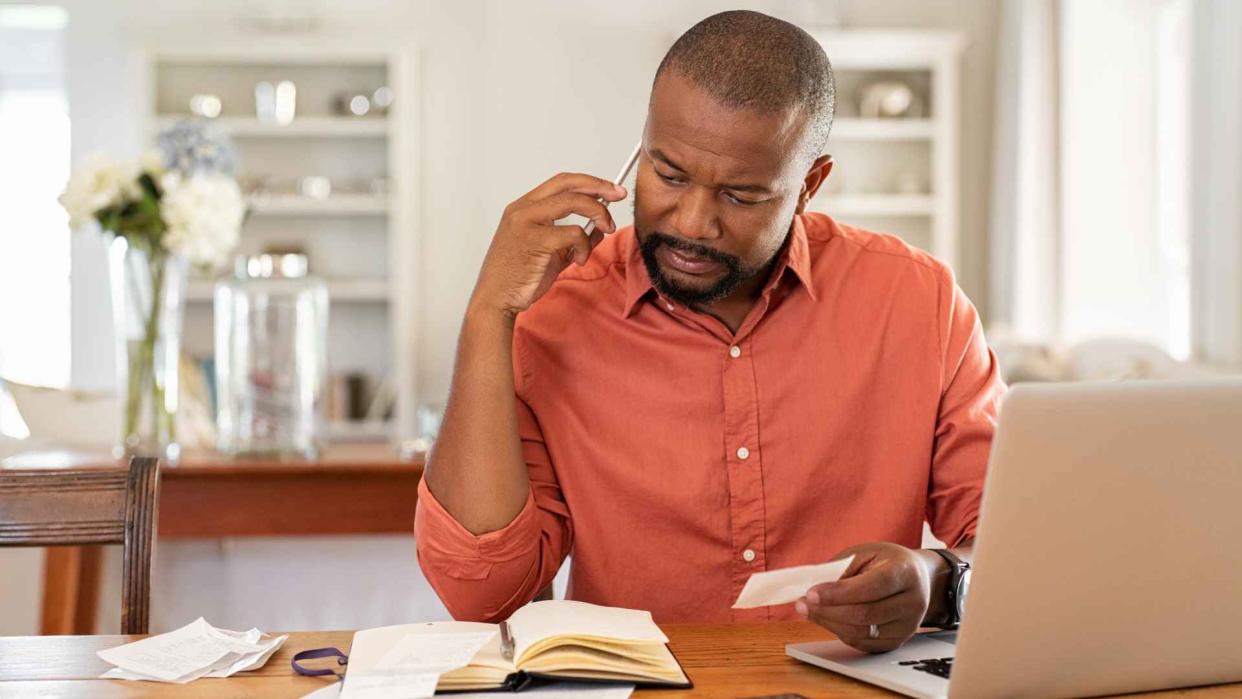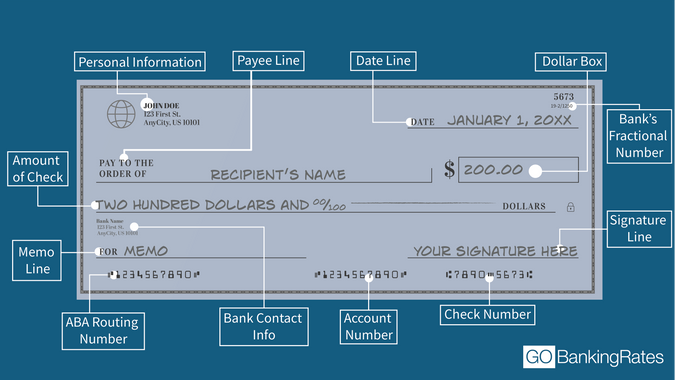What Should I Do if I’ve Make a Mistake While Writing a Check?

Paper checks, though not used daily as much as they used to be, are still a necessary part of making payments and managing your checking account in many ways. Online banking has made digital transactions more convenient and commonplace, however, there are still certain times you will need to know how to fill out a check correctly.
What Are the Parts of a Check? A Quick Take
If you have a blank check in front of you it is a good idea to know how to fill it out, but also how to correct any mistakes you make along the way. Before you get started, try to familiarize yourself with the different parts of a check listed below.
Filling Out a Check: What Info Is on a Check?
Your personal information: In the upper left-hand corner you’ll find your personal information, which will vary depending on the specifications you gave your bank, but often includes your name and address.
Check number: The checking number for the specific check you are filling out can be found in the upper and lower right corner of the check, which helps you keep track of what check was used for what expense.
Date line: The upper right corner of the check is where you date the check or right a future date that the check can be cashed or deposited.
Pay to the order of line: The payee line designates who you wrote the check to and who can receive the money.
Dollar amount box: This is the box with a dollar sign in it where you fill out the amount of the check numerically.
Dollar line: This line is located underneath the payee line and dollar amount box and is where you write the dollar amount in words.
Memo line: The line in the bottom left corner of the check is the memo line and this is where you fill out the reason for payment.
Signature line: This is located in the bottom right-hand corner and it is where you sign the check.
Your bank’s routing number: The first set of numbers in the bottom left of your check is your bank’s American Banking Association, or ABA, routing number which tells banks where to find the funds for the check you’ve written.
Your bank account number: The second set of numbers after the routing number is your bank account number which lets the recipient know where the funds are coming from.
Endorsement line: This is located on the back of the check and it is where the recipient signs so they can cash or deposit the check you’ve written.

How To Correct a Mistake On a Check: Step-by-Step
You need to pay rent and you’re on your last check in the book. You start filling it out when you suddenly realize you’ve made a mistake. Don’t panic, as many mistakes are fixable on a check without having to void it or start a new check. Here are steps you can take if you’ve made a mistake while writing a check.
Cross out the mistake by drawing one neat line through the middle of the mistake. Do not scribble it out or black it out as banks still need to see why the correction was made. Essentially you don’t want to hide the error but rather show what mistake was made and why it was corrected. So keep it neat and legible to avoid having it get rejected by the bank.
Write the correction above the crossed-out mistake. Make sure to keep the writing small, easy to read and neat, so as to not write over other parts of the check or make it hard to see.
Initial your correction to authenticate it. Without your initials, the correction and the check will likely not be accepted by the bank so make sure you don’t skip this step. If you make more than one mistake, you must initial each correction.
Alert teller to your corrections. If you are depositing the check in person, make sure to alert the teller of any corrections you’ve made. If possible, you could also accompany the person you wrote the check to when they deposit it, in case you need to clear up any confusion on the check with the bank, though this likely won’t be necessary.
All else fails, you can opt to void the check. If you’ve made a mistake or multiple mistakes that don’t seem easily fixable by crossing out the error, it may be best to void the check and start over. Voiding any check you don’t want to go through by writing “void” in large letters over the front of the check is crucial so be sure to do this before starting another.
Final Take To GO
Most mistakes you make while filling out a check are fixable so don’t worry if you’ve made a small error. Simply correct it by following the steps above and your check should go through without issue. Make sure to keep track of all transactions as you would normally in case the bank has any questions.
FAQ
Here are some answers to frequently asked questions about what to do if you make a mistake while filling out a check.
How do you write a check?
To write a check you can simply follow the steps below:
Date the check with today's date or a future date you would like the recipient to wait before cashing or depositing.
Fill out the recipient's name or name of the company.
Put the dollar amount in the box with the dollar sign, and do so numerically.
Spell out the dollar amount in words on the line below the payee line.
Complete the Memo line with the reason for payment.
Sign the check. Without your signature, the check will not be valid.
How do I fix a mistake I've made on a check?
Here are steps you can take to correct a mistake you've made while writing a check:
Step 1: Cross out the mistake by drawing one neat line through the middle of the mistake.
Step 2: Write the correction above the crossed-out mistake neatly.
Step 3: Initial your correction to authenticate it.
Step 4: If you are depositing the check in person, make sure to alert the teller of any corrections you've made.
Step 5: Void the check by writing "void" in large letters over the front. This is your best option if you've made a mistake or multiple mistakes that don't seem easily fixable by crossing out the error.
What are the parts of a check?
Here is an overview of the different parts of a check:
Your personal information
Check number
Date line
Pay to the order of line
Dollar amount box
Dollar line
Memo line
Signature line
Your bank's routing number
Your bank account number
Endorsement line
What are the parts of a check that make it valid?
The parts of the check you need to fill out to make it valid are the date, recipient's name, the dollar amount of the check, the dollar amount of check written out in words, the memo line and your signature.
This article originally appeared on GOBankingRates.com: What Should I Do if I’ve Make a Mistake While Writing a Check?
